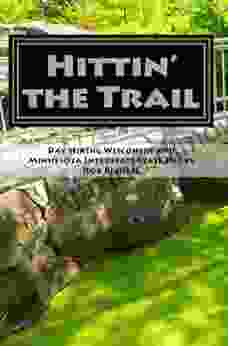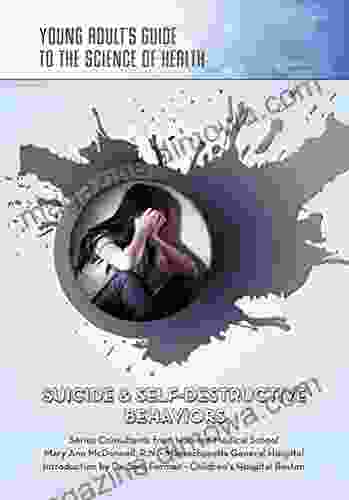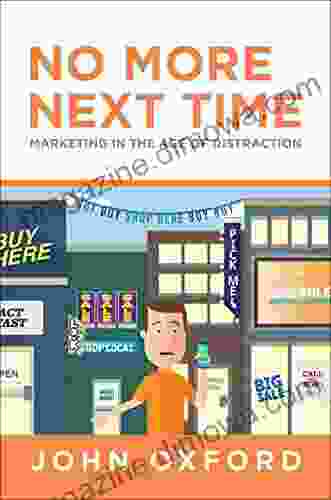Suicide: A Self-Destructive Behavior - A Young Adult's Guide to the Science of Hope

Suicide is a serious problem among young adults. According to the Centers for Disease Control and Prevention (CDC),suicide is the second leading cause of death for people aged 15 to 24 in the United States. In 2020, there were over 6,500 suicides in this age group.
Suicide is a complex issue with many contributing factors. Some of the risk factors for suicide include mental illness, substance abuse, and trauma. However, it is important to remember that suicide is not inevitable. There is hope for prevention.
4.6 out of 5
| Language | : | English |
| File size | : | 12550 KB |
| Text-to-Speech | : | Enabled |
| Enhanced typesetting | : | Enabled |
| Word Wise | : | Enabled |
| Print length | : | 145 pages |
| Screen Reader | : | Supported |
This book provides a comprehensive overview of the science of suicide. It covers the risk factors, warning signs, and prevention strategies. This book is intended for young adults who are struggling with suicidal thoughts or who have lost a loved one to suicide. It is also a valuable resource for parents, educators, and other adults who work with young people.
Chapter 1: Risk Factors for Suicide
The first chapter of this book discusses the risk factors for suicide. These risk factors include:
* Mental illness: People with mental illness are at an increased risk for suicide. This is especially true for people with depression, bipolar disFree Download, and schizophrenia. * Substance abuse: People who abuse drugs and alcohol are also at an increased risk for suicide. This is because drugs and alcohol can impair judgment and increase impulsive behavior. * Trauma: People who have experienced trauma are also at an increased risk for suicide. This is because trauma can lead to feelings of hopelessness and worthlessness.
It is important to note that not everyone who has one or more of these risk factors will attempt suicide. However, these risk factors do increase the likelihood of suicide.
Chapter 2: Warning Signs of Suicide
The second chapter of this book discusses the warning signs of suicide. These warning signs include:
* Talking about suicide: If someone is talking about suicide, it is important to take them seriously. This is especially true if they are also exhibiting other warning signs. * Giving away belongings: If someone is giving away their belongings, it may be a sign that they are planning to end their life. * Withdrawing from social activities: If someone is withdrawing from social activities, it may be a sign that they are feeling hopeless and isolated. * Changes in mood or behavior: If someone is experiencing sudden changes in mood or behavior, it may be a sign that they are struggling with suicidal thoughts.
If you are concerned that someone you know may be suicidal, it is important to reach out for help. You can call the National Suicide Prevention Lifeline at 1-800-273-TALK (8255).
Chapter 3: Prevention Strategies
The third chapter of this book discusses prevention strategies. These strategies include:
* Talking to someone: If you are struggling with suicidal thoughts, it is important to talk to someone who can help. This could be a friend, family member, therapist, or other trusted adult. * Getting help for mental illness: If you are struggling with mental illness, it is important to get help. This could involve medication, therapy, or both. * Avoiding drugs and alcohol: Drugs and alcohol can impair judgment and increase impulsive behavior. This can make it more difficult to cope with suicidal thoughts. * Connecting with others: It is important to connect with others who can provide support. This could involve joining a support group or spending time with friends and family.
If you are concerned that someone you know may be suicidal, there are things you can do to help. These include:
* Talking to them: Let them know that you are there for them and that you care about them. * Listening to them: Allow them to express their feelings without judgment. * Encouraging them to get help: If they are struggling with suicidal thoughts, encourage them to talk to a therapist or other mental health professional.
Suicide is a serious problem, but it is not inevitable. There is hope for prevention. If you are struggling with suicidal thoughts, please reach out for help. There are people who care about you and want to help you get through this difficult time.
4.6 out of 5
| Language | : | English |
| File size | : | 12550 KB |
| Text-to-Speech | : | Enabled |
| Enhanced typesetting | : | Enabled |
| Word Wise | : | Enabled |
| Print length | : | 145 pages |
| Screen Reader | : | Supported |
Do you want to contribute by writing guest posts on this blog?
Please contact us and send us a resume of previous articles that you have written.
 Book
Book Novel
Novel Page
Page Chapter
Chapter Text
Text Story
Story Genre
Genre Reader
Reader Library
Library Paperback
Paperback E-book
E-book Magazine
Magazine Newspaper
Newspaper Paragraph
Paragraph Sentence
Sentence Bookmark
Bookmark Shelf
Shelf Glossary
Glossary Bibliography
Bibliography Foreword
Foreword Preface
Preface Synopsis
Synopsis Annotation
Annotation Footnote
Footnote Manuscript
Manuscript Scroll
Scroll Codex
Codex Tome
Tome Bestseller
Bestseller Classics
Classics Library card
Library card Narrative
Narrative Biography
Biography Autobiography
Autobiography Memoir
Memoir Reference
Reference Encyclopedia
Encyclopedia John Meyer
John Meyer Joanne Otto
Joanne Otto Joe Putignano
Joe Putignano Peter Neill
Peter Neill Kindle Interactive Edition
Kindle Interactive Edition Stan Zweifel
Stan Zweifel Joe C Johnson
Joe C Johnson Nicole Zoltack
Nicole Zoltack Michael Wynn
Michael Wynn Joe Crispin
Joe Crispin Jon C Lohse
Jon C Lohse John Kendrick Bangs
John Kendrick Bangs Michael E Newton
Michael E Newton Lexie Barnes
Lexie Barnes Susan Broesche
Susan Broesche Joe Deccan
Joe Deccan Joe Palmer
Joe Palmer Johanna Drucker
Johanna Drucker Joerg Muenzing
Joerg Muenzing John Carroll
John Carroll
Light bulbAdvertise smarter! Our strategic ad space ensures maximum exposure. Reserve your spot today!

 Theodore MitchellDay Hiking Wisconsin And Minnesota Interstate State Parks: Hittin' The Trail
Theodore MitchellDay Hiking Wisconsin And Minnesota Interstate State Parks: Hittin' The Trail Jace MitchellThe Rise and Fall of Kate Chase Sprague: Civil War Belle of the North and...
Jace MitchellThe Rise and Fall of Kate Chase Sprague: Civil War Belle of the North and...
 Fyodor DostoevskyEmbark on an Unforgettable Adventure with "The Andes Guide for Climbers and...
Fyodor DostoevskyEmbark on an Unforgettable Adventure with "The Andes Guide for Climbers and... Joshua ReedFollow ·14k
Joshua ReedFollow ·14k Desmond FosterFollow ·8.5k
Desmond FosterFollow ·8.5k Peter CarterFollow ·4.4k
Peter CarterFollow ·4.4k Mario BenedettiFollow ·18.2k
Mario BenedettiFollow ·18.2k W. Somerset MaughamFollow ·13.8k
W. Somerset MaughamFollow ·13.8k Cruz SimmonsFollow ·18.5k
Cruz SimmonsFollow ·18.5k Preston SimmonsFollow ·2.2k
Preston SimmonsFollow ·2.2k Isaac AsimovFollow ·8.6k
Isaac AsimovFollow ·8.6k

 Joshua Reed
Joshua ReedTake Your Marketing Business Into The Next Level
Are you ready to...

 Aaron Brooks
Aaron BrooksFrom Fourier to Cauchy-Riemann: Geometry Cornerstones
From Fourier to Cauchy-Riemann: Geometry...

 Orson Scott Card
Orson Scott CardUnveiling the Art of Mitigation Banking: A Comprehensive...
In the intricate dance between...

 Victor Hugo
Victor HugoUnleash Your Creativity: A Journey Through the Enchanting...
Prepare to be captivated as we...

 Duncan Cox
Duncan CoxLoad of Bull: An Englishman's Adventures in Madrid
By Simon Bunce ...
4.6 out of 5
| Language | : | English |
| File size | : | 12550 KB |
| Text-to-Speech | : | Enabled |
| Enhanced typesetting | : | Enabled |
| Word Wise | : | Enabled |
| Print length | : | 145 pages |
| Screen Reader | : | Supported |








